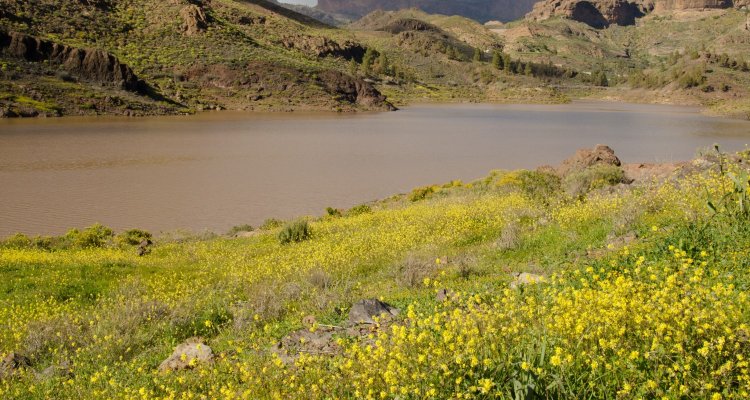
Project
Photosynthesis under extreme light conditions
Photosynthesis is a process in which the cell captures light and converts its energy into organic compounds, like for example, the sugars on our food. We could speculate that in conditions of higher light, higher energy, more organics compounds will be generated. But the high energy can affect the activity of the proteins and the stability of the molecules, so the plants face the challenge of maintaining the photosynthetic machinery active even under extreme circumstances.
Hirschfeldia incana belongs to the Brassicaceae family together with other two important crops cabbage and mustard. We know that these three species stand out in capturing light and their conversion to organic compounds even when the conditions of light are extremely high. Understanding the molecular basis that makes these species so efficient can be the clue to improving crops in which their photosynthesis is being restricted under high light.
Background
It is predicted that by 2050 the yields of major food crops will have to increase by between 60-110% from 2013 levels to feed the world’s growing population. These increases must occur against the backdrop of climate change, lack of suitable land for expansion of agriculture, and plateauing yields of major crops. Crop yield potential can be expressed as a product of four parameters: the total incident photosynthetically active radiation (PAR) over a growing season; light interception efficiency (fraction of PAR intercepted); conversion efficiency (largely determined by photosynthetic light-use efficiency, which is in itself a complex trait); and partitioning efficiency (amount of generated biomass partitioned into harvested organs). Both light interception and partitioning efficiency were greatly improved during the Green Revolution and are thought to be approaching theoretical maxima. Conversion efficiency has not seen the same levels of improvement and is thought to be well below its theoretical maximum. Therefore, increasing photosynthetic efficiency, and subsequently conversion efficiency, represents a promising approach for increasing crop yields.
Studying natural variation of photosynthesis offers one approach to identifying mechanisms for enhancing photosynthetic efficiency. There is significant natural variation of photosynthesis, both between and within species, primarily associated with environmental adaptation (van Bezouw et al., 2019). A striking example of this is the evolution of exceptionally high photosynthetic rates in some Brassicaceae species, particularly Hirschfeldia incana. This annual species is predominantly found in semi-arid environments around the Mediterranean, where high growth rates are required to maximise the opportunity offered by the short window available for growth after sporadic periods of rainfall. Previous work in the Photosynthesis in Extremophiles research program has shown that H. incana has a high CO2 assimilation rate of ~50 μmol m-2 s-1 or more at an irradiance of 2200 μmol m-2 s-1. This is substantially higher than that of closely related species such as Brassica nigra and Brassica rapa, which have assimilation rates of up to 40 μmol m-2 s-1, and much higher than that of A. thaliana, at around 30 μmol m-2 s-1 – which is more typical of a C3 crop plant.
Description
Improving photosynthesis is a promising route to increase crop yields that has been under explored to date. Hirschfeldia incana is a C3 species in the Brassicaceae family which displays exceptionally high photosynthesis rates, especially at high irradiances. The mechanisms by which these high rates are generated and their genetic basis are not known. The objectives of this WP1.2 subproject within the larger framework of the Photosynthesis in Extremophiles research program are to understand which changes in gene expression underlie the evolution of high photosynthesis rates in this species, compared to other Brassicaceae; how gene expression is regulated; what the phenotypic consequences are of the expression of particular genes and what the biological role is of such genes. This will be achieved by studying three closely related species, H. incana, Brassica rapa and Brassica nigra, and the more distantly related Brassicaceae model species Arabidopsis thaliana.
The photosynthetic physiology of these species will be studied and compared in detail, as well as the contribution of leaf and plant architecture, at different irradiances, to understand how the high rates are generated. Detailed, tissue- and time-resolved comparative transcriptomics will be performed to identify specific changes in gene expression associated with exceptionally high photosynthetic rates. These will be combined with bioinformatics and experimental approaches to investigate the mechanism underlying changes in expression patterns between species. We will determine the function of the most prominent genes likely to cause the differences in high photosynthetic light use efficiency at high light intensities. When we know how high photosynthetic rates are generated, which genes are involved, and how this has evolved, we will be able to use this knowledge to develop methods to improve the photosynthesis of crop species.